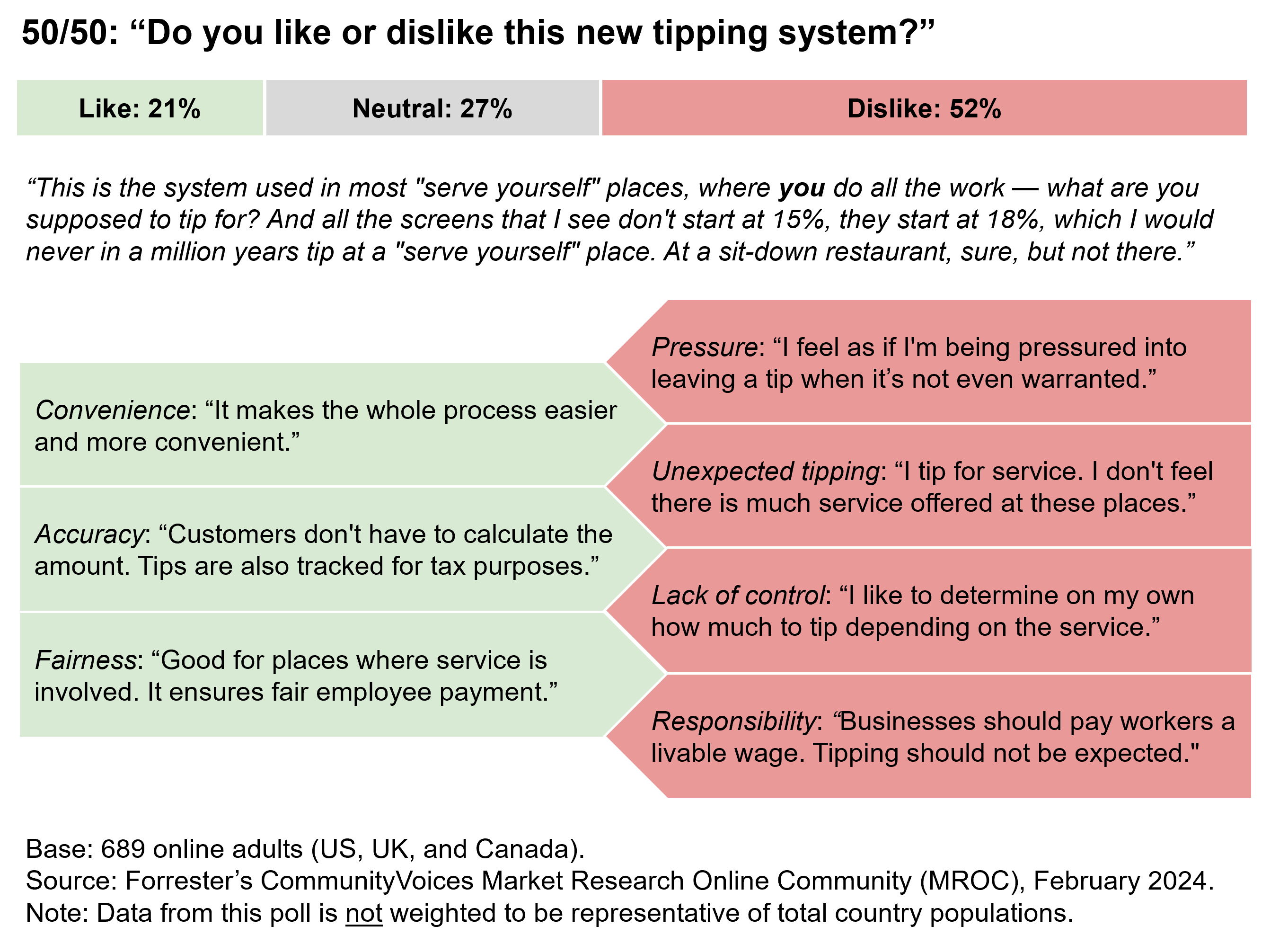Welcome to Forrester’s new blog series, which we’re calling “50/50” — here, we’ll showcase two sides of a B2C marketing issue based on consumer sentiment. Our premier topic? The great tipping dilemma.
“Accurate” — “clear” — “convenient” — “easy” — “efficient”
“Greedy” — “impersonal” — “intrusive” — “pressuring” — “presumptuous”
These are some of the contrasting adjectives used to describe the automatic tipping prompts on the digital point-of-sale devices that are found at an increasing number of businesses, such as coffee shops or fast food restaurants. The sentiments come from Forrester’s CommunityVoices Market Research Online Community (MROC) panel members in a survey about tipping earlier this month. Of the 689 responding online adults in the US, UK, and Canada, about two-thirds said that they had made a purchase at a business that uses this new tipping system. The feedback was generally negative: About a quarter like it, a quarter are neutral, and half dislike it. As many of the adjectives imply, the responses fell into the following themes:
- Pro: convenience and ease of use. Some appreciated the new tipping system because it is easy to use and eliminates the need for mental math calculations. It provides clear options and makes the tipping process quick and efficient.
- Pro: accuracy and transparency. Several liked that the new tipping system provides accurate tip calculations and shows the corresponding dollar amount. It also ensures that tips are accurately tracked and recorded.
- Pro: fairness. A few noted that the new tipping system helps ensure fair payment for service providers. They also see it as a way to reduce harassment and create a more positive experience for both providers and customers.
- Con: pressure and obligation. Many expressed their dislike for feeling compelled to tip, even in situations where tipping may not be warranted. They value the freedom to make their own tipping decisions.
- Con: unexpected tipping. A significant number raised concerns about the expansion of tipping into businesses where it traditionally has not been expected, such as fast food restaurants or counter service establishments. They believe tipping should be reserved for situations where additional service is provided.
- Con: lack of control. A considerable number highlighted their preference for having control over how much to tip and when to tip. They felt that the preset tip amounts and percentages limited their ability to make their own tipping decisions.
- Con: payment responsibility. Several expressed their belief that businesses should be responsible for paying their employees fair wages instead of relying on customer tips. They feel that the cost of service should already be included in the price of the product or service.

What does this negative sentiment mean for businesses? In the short term, probably not much. US consumers tend to tip more when tipping digitally, and they are now tipping at locations that they may not have before. But in the long term, businesses that unnecessarily or excessively solicit tips could lose customers due to fatigue. For instance, one MROC member declared, “These [digital point-of-sale devices] trying to make the consumer tip is one of the many reasons I no longer eat out. The high prices of eating out and having to tip keep me from eating anywhere but my home.” Businesses, especially those that do not offer direct service, should avoid tipping the scales too far toward short-term gain.
Thoughts on tipping or what we should cover next? Email mkearney@forrester.com.








